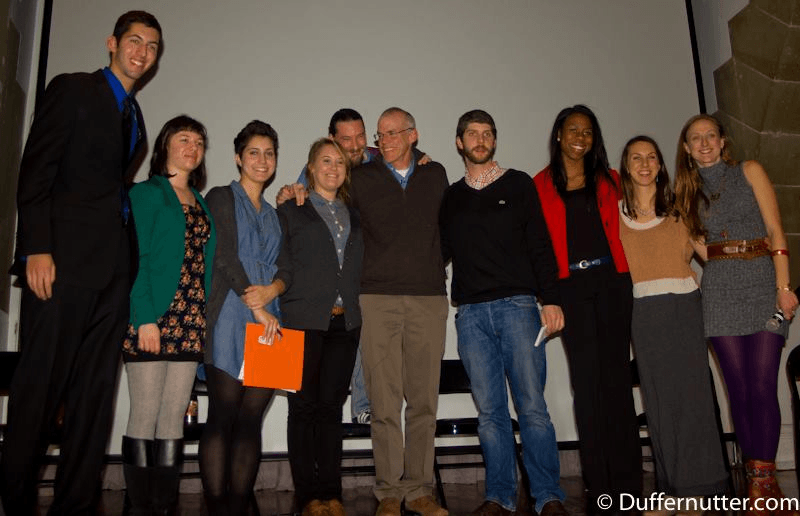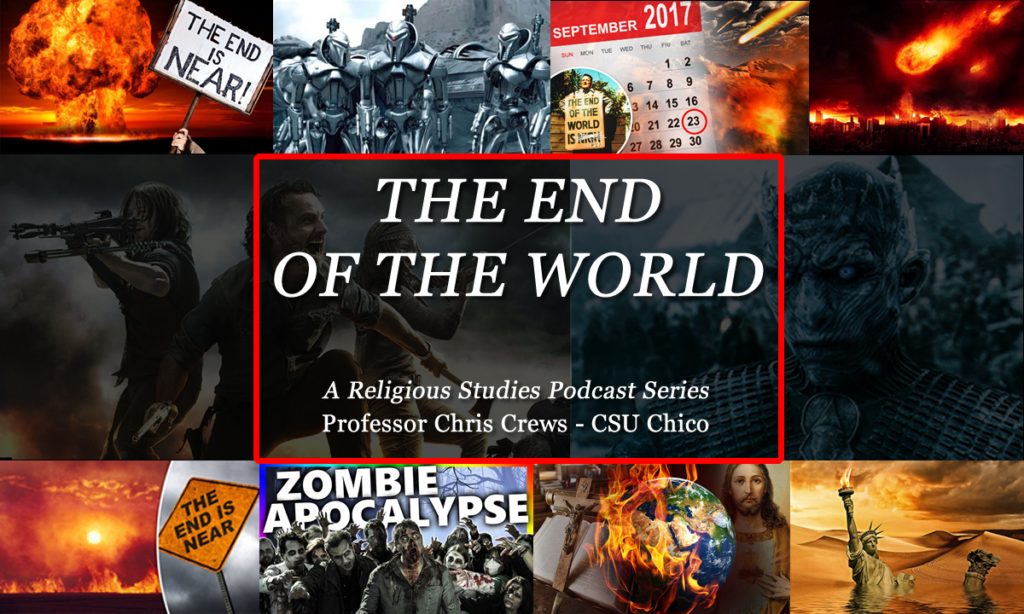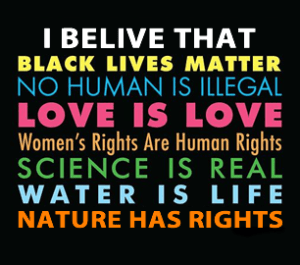Climate Change and Divestment Politics – pt.1
So last week I had the chance to sit on stage with a handful of New York students and Bill McKibben and ask him some questions about the newly emerging climate divestment movement that a number of NY schools are beginning to work on, and which was the focus of the fossil free divestment talk that Bill gave at Cooper Union. In a nutshell, the campaign aims to get American universities (and a few other institutions) to divest their endowment money or other financial products from the top 200 fossil fuel companies. The hope is that between the financial hit that these companies might take, combined with additional efforts to weaken their political clout in Washington, we might start to shift the discussion around climate change and energy politics in the US.
As someone who has worked on a number of student campaigns over the years, I am both hesitantly excited and justifiably skeptical about the potential of this movement to succeed. However I do think that this campaign and the evening at Cooper Union offer an opportunity to reflect on the strategies and messaging of the movement at this juncture. So in that spirit of forward-looking self critique, here’s my two cents.
Putting Divestment in Context
Any financial divestment strategy on its own is meaningless. That’s the first lesson the fossil fuel divest movement needs to remember, and this goes doubly for those relatively new to political activism.
First, divestment is an inherently conservative political strategy, because by its very nature it is already fully within a free market, capitalist economic logic. Divestment only makes sense if you imagine the globalized world of finance will always exist, and therefore all political strategies must operate with the logic of capital. In many ways that makes it a losing strategy before it even begins.
Secondly, and following from the first, it gives priority to elite institutions as the focus of climate organizing. In other words, because the divest movement targets university endowments and financial holdings, it has already excluded the majority of the America public from participation. Consider the following.
According to the US Census Bureau, as of today (Feb. 8) there are around 315,295,678 people living in the US. So 315 million is our first number to remember (after all, the 350 folks love their numbers, don’t they). According to the National Center for Education Statistics, as of the fall 2012 there were around 21.6 million students enrolled in higher education in the US. That’s our second number. If we take 315/21.6 we get about 14.58 percent. In other words, the divest campaign excludes about 85% of the American public from involvement as a political strategy.
Of course the number is actually much higher, since nowhere near 21.6 million college students are interested or involved in politics. If we assume an active student participation rate of 10%, which from my experience is far too high–but let’s use 10% for this argument–then we could realistically imagine somewhere in the ballpark of 200,000 potentially engaged students across the country on this issue, out of a total of 315 million. Do the math. It’s not an encouraging number. We could probably pad up this number a bit if we consider that the campaign has also tried to connect with religious and other institutional pension funds, and not only colleges.
Clarifying the Real Divest Goal
If you go through the promo material from Fossil Free, the organizing hub for 350.org on this issue, you will see that the focus is primarily on the institutional power brokers like university Presidents and Board of Trustees.
“We want College and University Presidents and Boards (as well as Religious and Pension funds) to immediately freeze any new investment in fossil fuel companies, and divest from direct ownership and any commingled funds that include fossil fuel public equities and corporate bonds within 5 years.”
But the real ask isn’t actually stopping current investments and redirecting future investments by universities, although on the surface this appears to be the goal. As they state on their website, the real goal of the fossil fuel divest campaign managers is to achieve the following concessions from the fossil fuel industry:
- immediately stop exploring for new hydrocarbons
- stop lobbying in Washington and state capitols across the country to preserve special breaks
- pledge to keep 80% of current reserves underground forever
Now I am no psychic, but I am pretty sure that these are impossible goals to achieve through divestment or any other consumer actions in our current politic-economic climate. Even if everyone who supported the divest movement went carbon free tomorrow–which of course is impossible, but never mind that for now–it would still hardly make a dent in the bottom line or political clout of big companies like Exxon Mobile, BP or Shell. After all, these are multinational corporations operating in virtually every continent and country on Earth! So it is a little unclear to me what the real goal is: is it to move money and political support away from the big energy polluters, to get them to change their act, or to make their very existence irrelevant? These are quite different goals in my mind, and in some ways mutually exclusive. Which bring me to my final point.
The Real Price of Change
There were some really nice slides that Bill showed during his talk which were meant to illustrate how people all over the world are taking part in 350.org events, such as the “connect the dots.” Here’s one of the hundreds of examples from 350.org “connect the dots” photostream. More here.
Seeing images like this certainly makes the average American audience, which is overwhelmingly white and middle class, feel good about what they are doing. And Bill reinforced this by saying that many of the communities most impacted by climate change are people of color outside of Europe and North America, and that climate change is not just a white, middle class issue anymore. Here I both agree and disagree.
He’s right that this issue disproportionately impacts poor and marginalized communities, and that they have an equal concern about these issues as well. But the unstated implication is often that these shows of public concern and support translate into a global movement for climate change. Here is where I disagree. Many of the people in the photos he showed, especially from countries like Afghanistan, Yemen, Saudi Arabia, Tajikistan and Pakistan, are literally putting their lives on the line twice. Once to survive day-to-day life under dictatorships or US military occupations, and a second time by risking their safety to be a part of civil society movements often seen as hostile to state or private interests.
But there is no equal exchange of risk on the part of Americans. Yes, a handful of people in US cities like New York or New Orleans have paid the cost of climate change with their lives, but these are the exception, not the rule. And yes, people have gone to jail to stop things like mountaintop coal mining in West Virginia or the Keystone XL pipeline. Folks spend 1-3 days in jail, feel vindicated for the good work we are doing, and then go back to our usual routines. But there is no real risk involved. Not really. And so there is no real commitment.
This is hard to hear, and equally hard to write, but it is something we need to be reminded of. Middle class white activists in the US, like myself, like to think we are doing all we can, that our efforts are making a difference, and that we are part of the solution and not part of the problem. But we are both. If the climate justice movement is serious about kicking fossil fuel out of power, then we need to reassess what we are willing to do to make that change happen. That is going to mean some hard choices, and some even harder sacrifices, but I’m not sure we are actually willing to make them as a movement. Part of the problem is precisely that we have the privilege to choose. It’s a luxury that many climate refugees on the front lines of this war have no say in. And make no mistake, this is a carbon war. The question is, how badly do we really want to win?
I’ll continue this analysis in pt 2 with my thoughts on what we need to do if we are serious about fighting back.
Until next time…hello Nemo.
###




